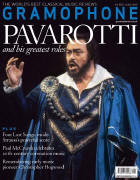Texte paru dans: / Appeared in: |
|
 (Recording of the month) |
Outil de traduction (Très approximatif) |
|
Reviewer: Richard Lawrence This is superb. Here is a generous selection of sacred pieces by Charpentier, impeccably performed by Ensemble Correspondances under Sébastien Daucé. Most were composed at the behest of the Duchess de Guise, Charpentier’s deeply religious employer, whose household included a substantial complement of singers and instrumentalists. The CDs include three substantial histoires sacrées, each one lasting between 30 and 40 minutes. All have named characters, the story entrusted to one or more narrators. The first is Cecilia, Virgin and Martyr, probably composed in 1677. Cecilia’s husband and his brother Tiburtius, having converted to Christianity, are executed by Almachius. Cecilia then suffers the same fate. The drama proceeds swiftly, with a touch of Monteverdian stile concitato; the final chorus celebrates Cecilia as the patron saint of music, reeling off the ‘well-tuned cymbals’ and other instruments familiar from Psalm 150. Nicolas Brooymans’s forceful Almachius has a true match in the robustly defiant Cecilia of Judith Fa. Next comes the grim tale, familiar from many an Old Master, of Judith, who saved the city of Bethulia from capture by gaining admission to the tent of Holofernes, the Assyrian commander, and cutting off his head as he slept. Composed in 1675, the piece starts suddenly with a chorus of Assyrians. Perhaps a prelude is missing; but the effect is of Charpentier bursting to tell the story. Caroline Weynants is by turns challenging, faux-submissive and triumphant; and one can’t help but feel sorry for Renaud Bres’s eminently reasonable Holofernes. The two parts are separated by ‘Night’, ravishingly played by three bass viols: a picture in sound that looks forward to Orpheus’s ‘Cessez, cessez, fameux coupables’ in La descente d’Orphée aux enfers. As in Caecilia, there’s a final chorus of jubilation. The third of these concert mini-dramas is The Death of Saul and Jonathan, composed around 1682. The latter doesn’t appear but Saul does, starting with his visit to the Witch of Endor. The mezzo Lucile Richardot is very fine as the witch, raising Samuel in what is virtually a scena in itself. Nicolas Brooymans, a very palpable ghost, is accompanied by the buzzing sound of a regal. The chorus has striking harmonic clashes at ‘acerba’ (‘grievous’) and ‘amara’ (‘bitter’) when lamenting the deaths; David’s own lament for Jonathan, beautifully sung by David Cornillot, is underpinned by violins, recorders and those plangent viols. The whole work is on a par with an equally dramatic piece, Purcell’s magnificent ‘In guilty night’, which appeared some 10 years later. The shorter numbers include Dialogues: Christ and Mary Magdalene, Christ and sinners, Christ and mankind. The last of all is the most unusual. The Plague at Milan, which dates from 1679, was written in honour of Cardinal Charles Borromeo, star of the Council of Trent and a character in Pfitzner’s opera Palestrina. He is praised for the piety, humility and charity which led him to tend the sick during an outbreak of a ‘horrenda pestis’ in 1576. According to Thomas Leconte’s booklet note, these exemplary characters all reflect the ideals and aspirations of the Counter-Reformation. A splendid anthology; and what makes the set even more desirable is the so-called DVD bonus. The performance is not the same as on the CDs. Filmed in 2016 in the Chapelle Royale at Versailles, it consists of a dramatisation of two of the substantial histoires sacrées and four shorter pieces, one of which – the antiphon In odorem unguentorum, H51 – is not listed in the booklet. Aurélie Maestre’s set design is simplicity itself: a rocky outcrop which can be split in two, a flight of steps, a tree. Vincent Huguet bases his production around Mary Magdalene, Judith and Cecilia. During the viol-infused ‘Night’ interlude, Judith is dressed by her maid. As she lies on the bed with Holofernes, the camera focuses on their entwined hands; the maid, when describing the murder, holds the bag containing the severed head. But why, at the end, does Davy Cornillot’s Ozias present Judith with a cloth of honour and then contemptuously veil her? Not surprisingly, she throws it in his face and storms off. In Caecilia, Étienne Bazola’s Valerian shows a distinct lack of enthusiasm when Cecilia insists on preserving her virginity, but they get married all the same. The chorus of believers celebrate the conversion of the two men with simple gesturing. In Part 2 Almachius physically attacks Cecilia while threatening her, a shocking moment. The last piece is another antiphon, Sub tuum praesidium, H28, for three voices unaccompanied, Cecilia holding Judith and Mary Magdalene in a tender embrace. It’s a sublime ending. Do not miss these wonderful performances. |
|




